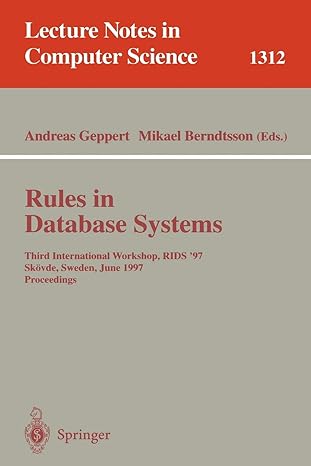Answered step by step
Verified Expert Solution
Question
1 Approved Answer
Problem 1 TF - IDF Implement TF - IDF using using Python, Numpy, Pandas and whatever text cleaning library required. The tf idf is the
Problem TFIDF
Implement TFIDF using using Python, Numpy, Pandas and whatever text cleaning library required.
The tfidf is the product of two statistics, term frequency and inverse document frequency. There are various ways for determining the exact values of both statistics, you can use the following formulas.
Term Frequency
tftdlogcounttd
tftd is the frequency of the word t in the document d
Inverse Document Frequency
idftlogNdft
N is the total number of documents
dft is the number of documents in which term t occurs
TFIDF
tfidft,dtftdtimes idft
What is expected?
Your implementation should include the following two functions:
computetfidfweightstraindocs
wordtfidfvectorword tfdf idfdf
def computetfidfweightstraindocs:
Input arguments:
traindocs : list of documents, ie strings
Output arguments:
docstf : tf as a DataFrame
docsidf : idf as a DataFrame
Note: the use of Pandas DataFrame is not mandatory
docstf None
docsidf None
return docstf docsidf
def wordtfidfvectorword tfdf idfdf:
Input arguments:
word : a query string
tftf : tf as a DataFrame
tfidf : idf as a DataFrame
Output arguments:
tfidfvalue : a numpy array of dimension xN
tfidfvalue None
return tfidfvalue
Problem Word embedding as features for classification
Task
Implement a sentiment classifier based on Twitter data to analyse the sentiments of COVID tweets.
Train and test multiple classification model using necessary libraries with the features being sentence embeddings of tweets.
Report the accuracy and F score micro and macroaveraged for multiple classifier and discuss the differences.
Dataset
The dataset have been provided in the first code trunk with the assignment. You are required to use the original tweet text for this classification task.
Tweet representation
After necessary preprocessing of the tweets, convert the words into their embeddings, then take the mean of all the word vectors in a tweet to end up with a single vector representing each tweet. The tweet vector is then used for sentiment classification.
In the process of finding the embeddings for each word, you can ignore outofvocabulary words.
Classifier choice
You are required to implement the following TWO classifiers:
One tradition classification model not a neural network based model
One classifier based on any neural network based model.
You can use PyTorchTensorFlowscikitlearn to implement your classifier. However, you are free to develop a classifier from scratch.
Your answer must include the following:
Code for data loading, data preprocessing, training, and testing of the models.
A discussion on the comparison between the classifiers based on classifier accuracy and F score
Step by Step Solution
There are 3 Steps involved in it
Step: 1

Get Instant Access to Expert-Tailored Solutions
See step-by-step solutions with expert insights and AI powered tools for academic success
Step: 2

Step: 3

Ace Your Homework with AI
Get the answers you need in no time with our AI-driven, step-by-step assistance
Get Started


